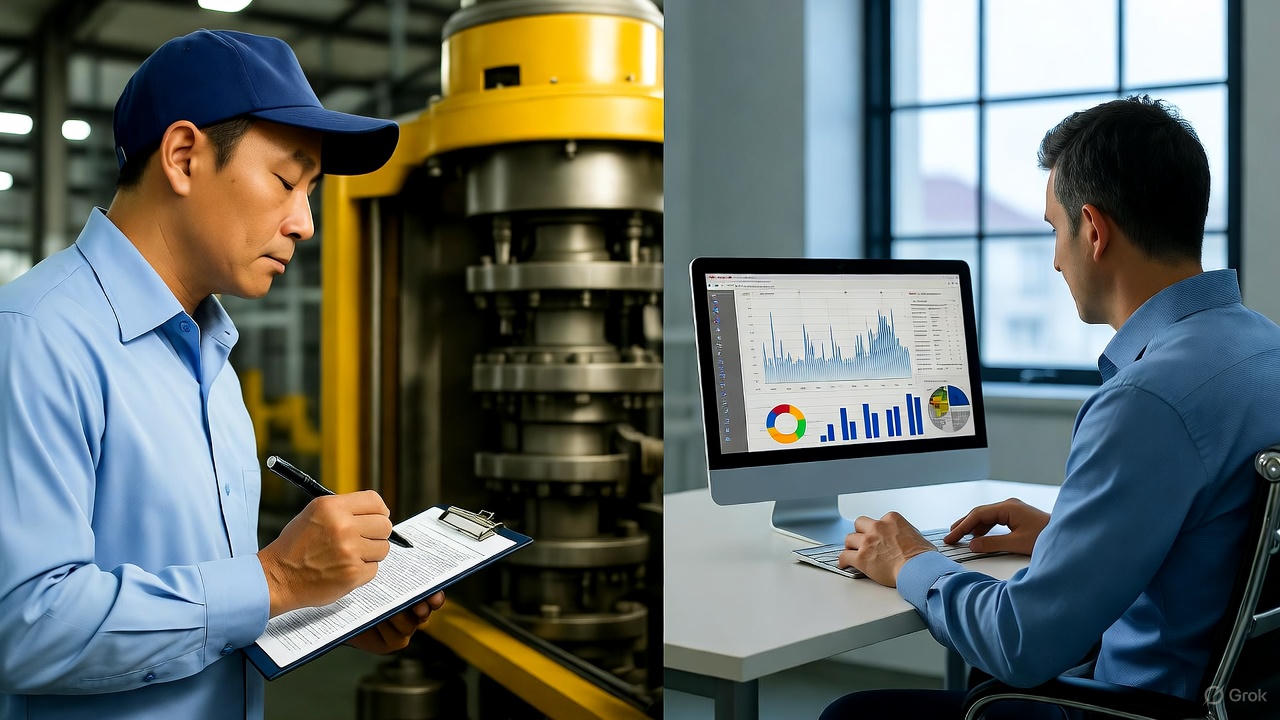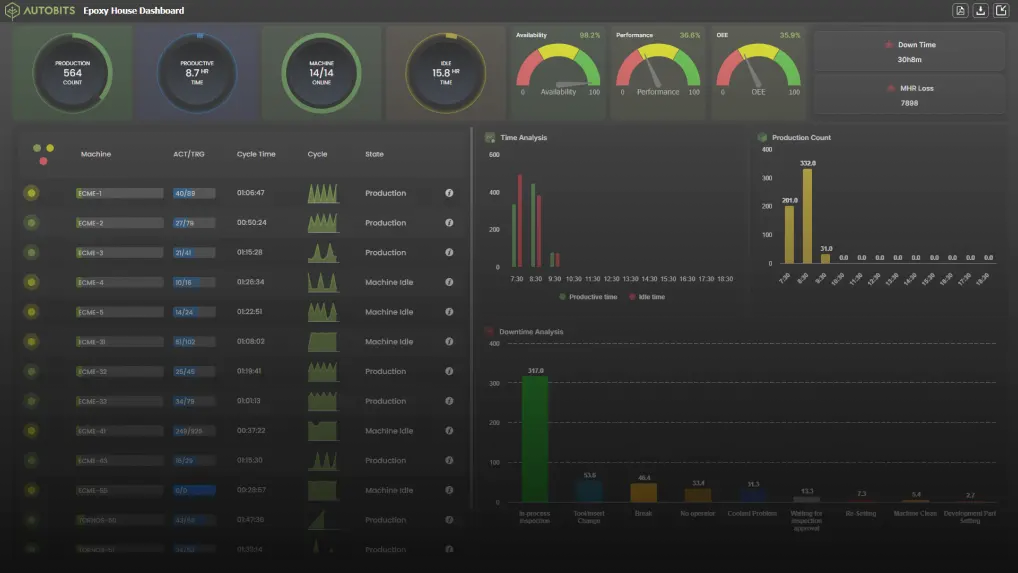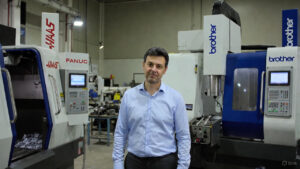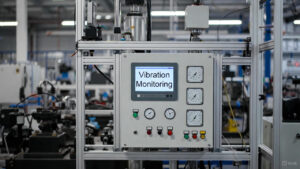Factories today are under constant pressure to produce more, faster, and with fewer errors. But many still rely on paper-based systems for reporting, quality checks, and production tracking. Those forms pile up, data gets delayed, and real-time decision-making becomes nearly impossible.
That’s where paperless manufacturing software comes in. It replaces all those manual records with digital workflows and live dashboards that capture production data directly from machines and operators. The result is faster reporting, fewer mistakes, and complete visibility into your factory floor.
In this blog, you’ll learn:
- What paperless manufacturing software really is
- Why factories are rapidly shifting away from paper-based systems
- The key benefits and ROI you can expect after going paperless
- How to choose the right software for your factory’s needs
By the end, you’ll understand how going paperless can transform your plant into a data-driven, smart factory ready for the future of manufacturing.
What Is Paperless Manufacturing Software?
Paperless manufacturing software is a digital system that replaces manual paperwork, production forms, and checklists on the shop floor with real-time digital workflows. Instead of writing on paper, operators record production data, machine status, and quality checks directly into a centralized system using tablets or computers.
This software collects information from both machines and humans, creating a single digital record of everything happening in the factory. It connects machines, production teams, and management through one platform that gives instant visibility into progress, downtime, and performance.
In simple words, it helps you:
- Monitor your machines and production in real time.
- Record operator activities, quality checks, and maintenance logs digitally.
- Eliminate delays and errors caused by manual data entry.
- Store all records securely for audits, reports, and analysis.
With paperless manufacturing software, every process becomes traceable and transparent. It acts as the foundation of a smart, data-driven factory where decisions are based on accurate information instead of assumptions.
Why Factories Need Paperless Manufacturing Software
In today’s competitive manufacturing environment, time, accuracy, and visibility are everything. Yet many factories still rely on paper-based systems to record production, maintenance, and quality data. What may seem like a simple routine is actually one of the most significant hidden costs in day-to-day operations.
Paperless manufacturing software eliminates those limitations by digitizing every step of production. To understand its importance, let’s break down the key challenges that paper-based factories face and how going paperless solves them.
Manual paperwork slows down production.
Operators spend a surprising amount of time filling out forms, logging part counts, and writing daily reports. Every minute spent on paperwork is time taken away from actual production. Paperless systems replace manual forms with digital checklists and auto-captured data from machines. This saves time and allows operators to focus on what they do best, keeping machines productive.
Errors and miscommunication are common.
Paper forms often lead to missing data, unreadable handwriting, or accidental errors. These mistakes ripple across departments, affecting production planning, inventory, and quality assurance. When data is collected digitally, information flows instantly to every team, ensuring that everyone works with accurate, real-time insights.
Lack of real-time visibility
In a paper-driven setup, production data is usually reviewed at the end of the shift or even days later. By then, it is too late to act on problems such as downtime or rework. With paperless manufacturing software, managers and engineers can monitor live dashboards that show precisely what is happening on each machine or production line. Decisions become faster and more proactive.
Audits and compliance take too long.
Preparing for internal or external audits can be stressful when records are scattered across files and binders. A digital system keeps all documents, quality reports, and process histories organized and instantly searchable. It also provides time-stamped records that help in meeting ISO, IATF, or other compliance requirements without last-minute panic.
No proper traceability
When data is on paper, it is hard to know who filled it, when it was recorded, or what changed later. Paperless systems automatically log user details, timestamps, and any modifications. This creates full traceability, making root cause analysis and accountability much easier.
Difficulty in measuring performance
Without automated data, it is challenging to calculate metrics like OEE (Overall Equipment Effectiveness), MTTR (Mean Time to Repair), or downtime trends. Digital systems capture these metrics continuously, giving managers a clear picture of where efficiency is lost and where improvements can be made.
Hidden costs of paper
Paper, printers, ink, and storage might not seem like major expenses, but across multiple shifts and machines, these costs quickly add up. More importantly, paper-based reporting delays decisions that directly affect profitability. Going paperless reduces operational waste and supports sustainability goals, helping factories move toward a greener future.
Missed opportunities for improvement
When data sits in files instead of a digital system, it cannot be analyzed effectively. Trends, patterns, and root causes remain invisible. Paperless software captures every data point in real time and turns it into actionable insights that drive continuous improvement.
In summary, paperless manufacturing software helps factories transition from reactive management to proactive control. It gives manufacturers instant access to reliable data, improves quality and traceability, and creates a more productive, connected, and efficient shop floor.
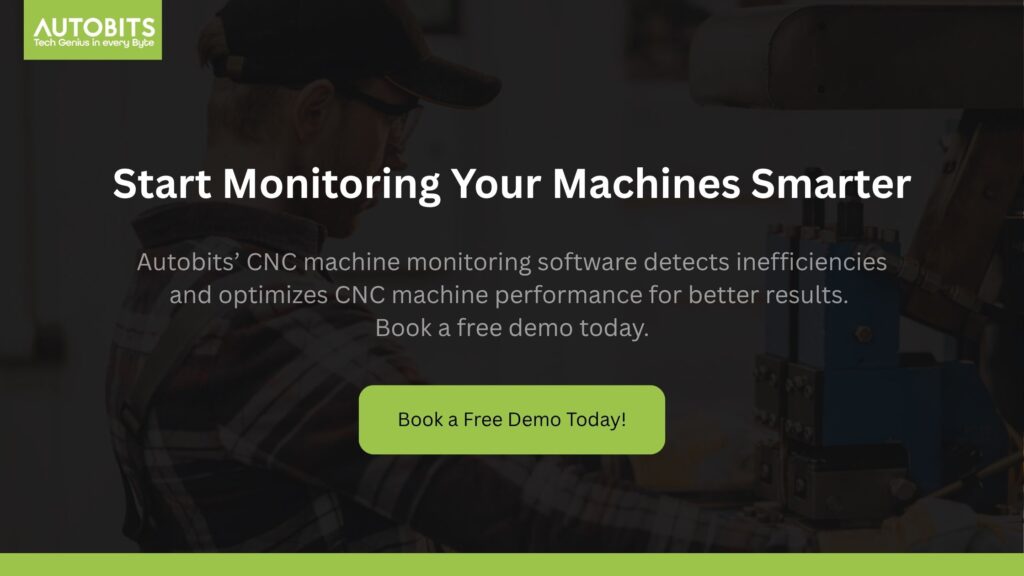
Key Benefits of Paperless Manufacturing Software
Switching to paperless manufacturing software is not just a technology upgrade. It is a complete transformation in how factories operate, monitor, and improve their production. By digitizing every process, manufacturers can unlock higher efficiency, better quality, and faster decision-making.
Let’s explore the key benefits that make going paperless one of the smartest moves for modern factories.
Improved operational efficiency
Operators no longer waste time filling forms or searching for records: digital checklists and automated data collection speed up every shift. Supervisors can review real-time updates on dashboards instead of waiting for end-of-shift reports. This saves hours of manual work every week and boosts productivity across departments.
Higher production accuracy
Manual data entry often introduces human errors that affect output calculations and quality records. Paperless systems ensure consistent and accurate data capture directly from machines or operator terminals. Every part count, cycle time, and inspection result is logged automatically, reducing the chances of mistakes.
Real-time visibility across the factory
With digital monitoring, production managers can see what is happening on the shop floor anytime, from anywhere. Machine downtime, cycle delays, and rework issues are displayed instantly. This real-time visibility helps managers take quick corrective actions, improving uptime and reducing losses.
Enhanced quality control and traceability
Digital quality checklists standardize inspections and ensure every step follows the proper process. When a defect occurs, engineers can trace back every detail instantly, including the operator, batch, machine, and time of production. This complete traceability makes it easier to find and fix root causes.
Faster audits and compliance readiness
Paperless systems automatically store every report, parameter, and approval in a secure, searchable database. During audits, it takes just seconds to pull out the required information. This saves days of preparation time and ensures compliance with standards like ISO, IATF, and other industry regulations.
Data-driven decisions and continuous improvement
Instead of relying on guesswork, managers can base their decisions on accurate data trends. Real-time dashboards show key metrics like OEE, downtime reasons, and quality performance. This empowers teams to identify bottlenecks, track progress, and make continuous improvements backed by data.
Cost reduction and quick ROI
Factories save significant amounts by reducing paperwork, rework, and idle time. Digital workflows improve machine availability and reduce production losses. Most companies see a return on investment within a few months of implementation, as time savings and efficiency gains quickly add up.
Better collaboration between teams
Operators, maintenance teams, and supervisors work in sync when all data is visible on a shared digital platform. Alerts, task assignments, and status updates are instantly communicated, removing the need for manual follow-ups or physical logs.
Eco-friendly and sustainable operations
Eliminating paper forms and printed reports supports a cleaner, more sustainable factory environment. It reduces waste, cuts printing costs, and aligns your factory with modern green manufacturing goals.
In essence, paperless manufacturing software helps manufacturers achieve more with the same resources. It simplifies daily operations, enhances visibility, and ensures that accurate data is always behind decisions.
Why Autobit’s Machine Monitoring Software is the Ideal Paperless Manufacturing Software
Many factories struggle with disconnected machines, manual forms, and delayed reports. Autobit’s Machine Monitoring Software solves this by capturing real-time machine data and operator inputs in a single digital platform. Production counts, downtime reasons, quality checks, and maintenance logs are recorded automatically, eliminating errors and giving managers instant visibility across the shop floor.
The software also supports digital checklists, process traceability, and integration with existing ERPs or sensors. Live dashboards provide actionable insights that help reduce downtime, improve quality, and optimize efficiency. By replacing paperwork with a digital system, factories save time, lower costs, and build a more connected and data-driven operation.

How to Implement Paperless Manufacturing in Your Factory
Implementing paperless manufacturing does not have to be overwhelming. The key is to start small, measure results, and scale gradually. Begin by identifying the most paper-heavy processes on the shop floor, such as production tracking, quality checks, or maintenance logs. Pick a single line or a few machines as a pilot and introduce digital workflows using tablets or computers.
Train operators and supervisors on the new system, focusing on ease of use and simple workflows. Monitor key metrics like downtime, scrap, and paperwork time to measure the impact. Once the pilot shows measurable improvements, expand the system across other lines or the entire plant. Continuous feedback and minor adjustments ensure smooth adoption, making the transition from paper-based to digital manufacturing both efficient and sustainable.
Key KPIs to Track with Paperless Manufacturing Software
To ensure your paperless manufacturing system delivers real value, it is essential to track the right key performance indicators. Some of the most critical KPIs include:
- Overall Equipment Effectiveness (OEE): Measures machine availability, performance, and quality to identify productivity gaps.
- Mean Time to Repair (MTTR) and Mean Time Between Failures (MTBF): Track how quickly machines are repaired and how often failures occur.
- Scrap Rate and First-Pass Yield: Monitor the quality of production and identify areas where defects occur.
- Paperwork Time Saved: Measure the reduction in hours spent on manual forms and reports.
- Audit Readiness: Evaluate how quickly and accurately you can produce required records.
- Energy per Part and Machine Utilization: Assess efficiency and optimize energy consumption for cost savings.
By continuously monitoring these KPIs, factories can make data-driven decisions, improve operational efficiency, reduce costs, and achieve higher quality outcomes with a paperless system.
Conclusion
Paperless manufacturing software is no longer just a modern trend; it is a necessity for factories that want to stay competitive. By replacing manual forms and disconnected systems with digital workflows, factories gain real-time visibility, higher accuracy, improved quality, and faster decision-making.
Autobit’s Machine Monitoring Software makes this transformation simple and effective. It connects machines, operators, and management on a single platform, providing actionable insights, reducing downtime, and improving overall efficiency. Going paperless is not just about saving time or paper; it is about building a connected, data-driven factory that can continuously improve and deliver better results.
By adopting paperless manufacturing software, your factory can streamline operations, enhance traceability, reduce costs, and create a more innovative, more sustainable production environment.
Frequently Asked Questions (FAQs)
What is paperless manufacturing software?
Paperless manufacturing software is a digital system that replaces manual forms, checklists, and reports with real-time digital workflows. It collects data from machines and operators, providing complete visibility and traceability across the factory floor.
How does Autobit’s Machine Monitoring Software integrate with existing systems?
It connects seamlessly with ERP systems, sensors, and machines to ensure smooth data flow across departments. This allows managers to make informed decisions without changing existing workflows.
Is paperless manufacturing suitable for small factories?
Yes. Even small factories can benefit from faster reporting, fewer errors, and better visibility. Implementation can start with a single line or a few machines and scale gradually.
How quickly can factories see ROI from paperless manufacturing software?
Most factories notice significant time savings, improved accuracy, and reduced downtime within a few months of implementing a digital system, making the investment worthwhile.
Does going paperless help with audits and compliance?
Absolutely. Digital records are time-stamped, searchable, and organized, making audits faster, more straightforward, and more reliable compared to manual paperwork

